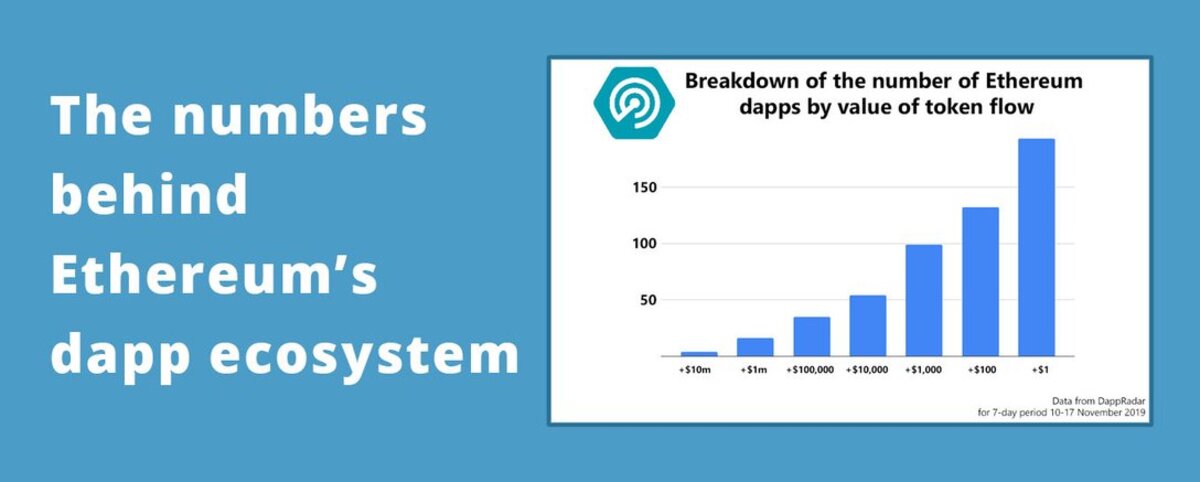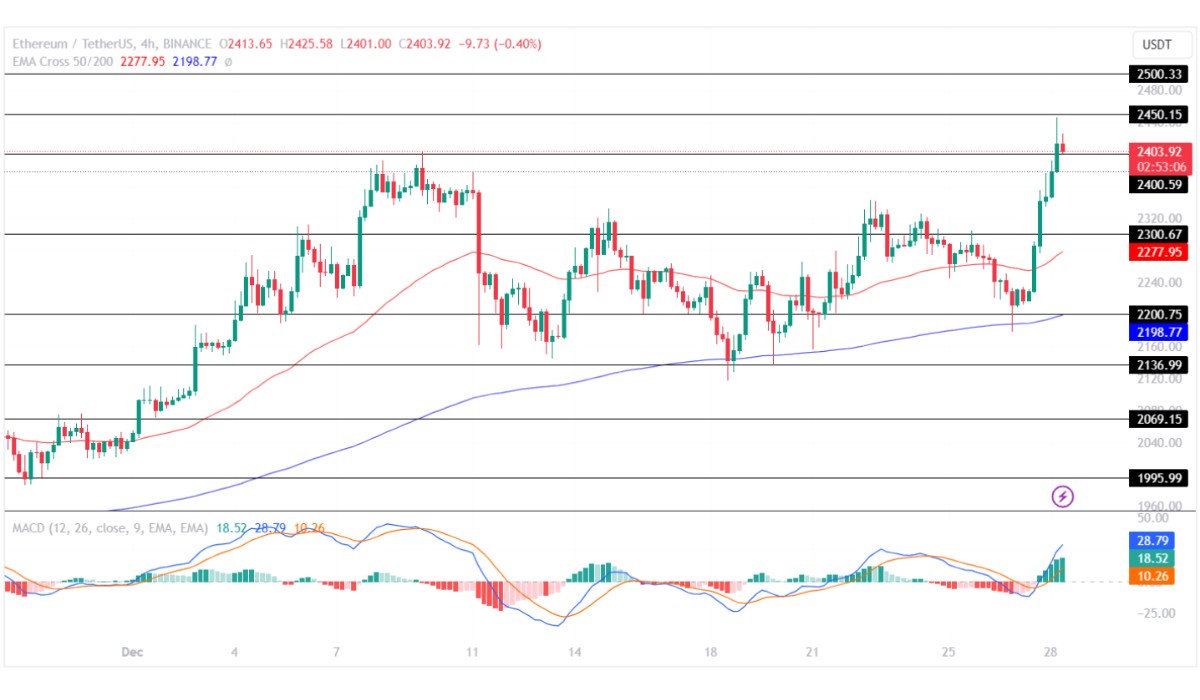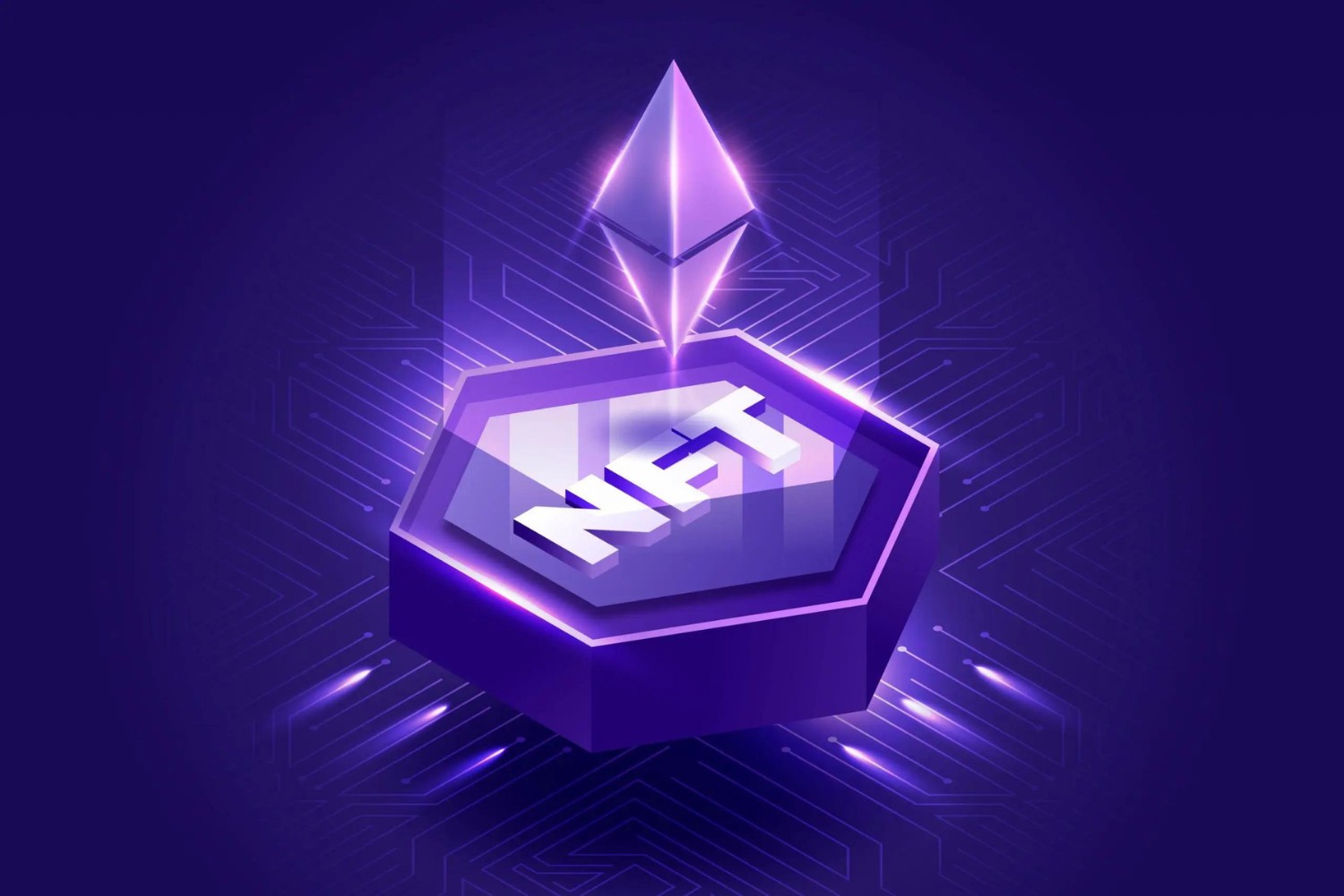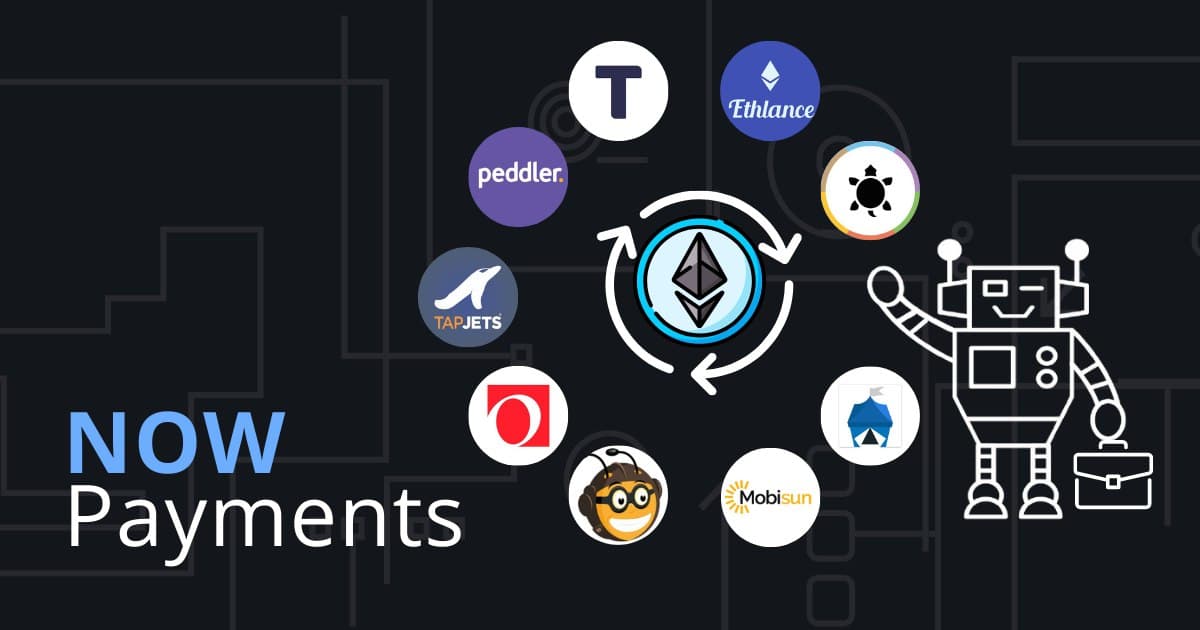Introduction
Welcome to the world of Ethereum – a cutting-edge technology that is revolutionizing the way we think about digital transactions and decentralized applications. With its innovative features and vast potential, Ethereum is rapidly becoming the future of finance and beyond.
But what exactly is Ethereum? Developed by the brilliant mind of Vitalik Buterin, Ethereum is an open-source blockchain platform that enables the creation and execution of smart contracts and decentralized applications (Dapps) without the need for intermediaries.
The rise of Ethereum is closely tied to the phenomenon of blockchain technology. Blockchain, as a decentralized and transparent ledger, brought about a paradigm shift in how transactions are verified and recorded. While Bitcoin introduced the concept of digital currencies, Ethereum expanded on this idea by introducing the concept of programmable smart contracts.
Smart contracts, essentially self-executing agreements with pre-defined rules and conditions, eliminate the need for intermediaries in transactions. By using Ethereum’s blockchain, individuals and organizations can automate various processes and ensure trust and transparency without relying on middlemen.
This groundbreaking technology opens up a world of possibilities. From streamlining financial transactions to revolutionizing supply chain management and even enabling new forms of governance, Ethereum has the potential to disrupt numerous industries and reshape the digital landscape as we know it.
As the demand for decentralized applications grows, Ethereum continues to play a significant role. With its Turing-complete programming language, developers have the freedom and flexibility to create sophisticated Dapps that can be used for a wide range of purposes, such as decentralized finance (DeFi), gaming, and social networks.
However, like any emerging technology, Ethereum has its challenges. Scalability has been a persistent issue, causing concerns about the platform’s ability to handle high transaction volumes. The Ethereum 2.0 upgrade aims to address these scalability issues and enhance the network’s performance and efficiency.
In this article, we will delve deeper into the world of Ethereum, exploring its functionalities, use cases, and future potential. Strap in as we embark on a journey to understand why Ethereum is a game-changer in the world of blockchain technology.
What is Ethereum?
Ethereum is an open-source blockchain platform that enables the creation and execution of smart contracts and decentralized applications (Dapps). Launched in 2015 by the brilliant programmer Vitalik Buterin, Ethereum expanded on the concept of blockchain introduced by Bitcoin and revolutionized the digital landscape.
At its core, Ethereum is a decentralized network of computers or nodes that store and maintain a shared database called a blockchain. This blockchain contains a record of all transactions and smart contracts executed on the Ethereum platform, ensuring transparency and immutability.
One of the key features of Ethereum is its ability to execute smart contracts. Smart contracts are self-executing agreements with predefined rules and conditions encoded within the Ethereum blockchain. These contracts automatically execute when conditions are met, removing the need for intermediaries or third parties.
While Bitcoin primarily focuses on being a digital currency, Ethereum aims to be a platform for building decentralized applications. It introduced a Turing-complete programming language called Solidity, which allows developers to write code that can be executed on the Ethereum Virtual Machine (EVM).
Through the EVM, developers can create complex and sophisticated applications that interact with the Ethereum blockchain. These applications, known as Dapps, have a wide range of use cases, ranging from decentralized finance (DeFi) platforms and digital identities to supply chain solutions and decentralized social networks.
Ethereum also has its native cryptocurrency called Ether (ETH), which serves multiple purposes within the network. Ether can be used as a medium of exchange for transactions, as well as to pay for computational services and deploy smart contracts on the Ethereum platform.
Furthermore, Ethereum has its consensus algorithm called Proof of Stake (PoS), which is undergoing a major upgrade known as Ethereum 2.0. This upgrade aims to improve scalability and increase the network’s ability to process a higher number of transactions. It will also introduce various enhancements, such as shard chains, to make Ethereum more efficient and sustainable.
In summary, Ethereum is a groundbreaking blockchain platform that goes beyond being a mere digital currency. With its support for smart contracts and decentralized applications, Ethereum is empowering developers and innovators to build a new generation of decentralized solutions that can revolutionize industries and reshape the future of technology.
The Blockchain Revolution
The advent of blockchain technology has brought about a revolution in various sectors, offering solutions to long-standing challenges and transforming traditional processes. At the heart of this revolution is Ethereum, a blockchain platform that has propelled the technology to new heights.
Blockchain, in simple terms, is an immutable and decentralized ledger that records and verifies transactions across a network of computers. Unlike traditional centralized systems, blockchain provides transparency, security, and trust without the need for intermediaries.
Ethereum takes the blockchain concept pioneered by Bitcoin and expands its capabilities by introducing programmable smart contracts. These self-executing agreements are encoded within the Ethereum blockchain, enabling automation and removing the need for intermediaries.
With the power of smart contracts, the blockchain revolution has expanded into various sectors. One significant area of impact is finance. Decentralized finance (DeFi) platforms built on Ethereum have democratized access to financial services, allowing individuals to participate in lending, borrowing, and trading without relying on traditional intermediaries like banks.
Another sector experiencing a transformation is supply chain management. Blockchain technology enables end-to-end transparency and traceability of goods and products, reducing fraud, increasing accountability, and streamlining processes. By utilizing Ethereum-based solutions, businesses can ensure the authenticity and integrity of their supply chains.
The healthcare industry is also being revolutionized through blockchain. By securely storing patient data on the Ethereum blockchain, individuals have greater control over their medical records and can grant healthcare providers access on a need-to-know basis. Blockchain eliminates data silos, enhances data security, and facilitates interoperability between various healthcare systems.
Moreover, Ethereum’s ability to foster decentralized applications (Dapps) is enabling new forms of social interaction and content creation. Social networks built on Ethereum provide users with ownership and control over their data, eliminating the monopolistic tendencies of centralized platforms.
Furthermore, the potential of blockchain extends to voting systems, intellectual property rights, energy management, digital identities, and more. With Ethereum as the backbone, these applications can operate transparently and securely, revolutionizing industries and empowering individuals with greater control and autonomy.
As the blockchain revolution continues to unfold, Ethereum remains at the forefront, providing a robust platform for innovation and disruption. Developers around the world are leveraging Ethereum’s capabilities to create groundbreaking solutions that challenge traditional paradigms and bring forth a new era of trust, accountability, and efficiency.
In the next sections, we will explore in more detail the functionalities of Ethereum, including smart contracts, decentralized applications, scalability, and the future potential of this remarkable blockchain platform.
Smart Contracts: Automating Transactions
One of the revolutionary features of Ethereum is its ability to execute smart contracts, which are self-executing agreements with predefined rules and conditions. By leveraging the power of smart contracts, Ethereum enables the automation of transactions and eliminates the need for intermediaries.
Smart contracts on Ethereum are coded in Solidity, a Turing-complete programming language specifically designed for the platform. These contracts contain the rules and logic that govern a transaction or agreement, ensuring that they are automatically executed when the specified conditions are met.
Traditional contracts typically require intermediaries, such as lawyers or escrow agents, to ensure that both parties fulfill their obligations. Ethereum’s smart contracts remove the need for such intermediaries, as the terms and conditions are embedded within the code and enforced by the blockchain.
With smart contracts, transactions become trustless, meaning that participants can engage in transactions without relying on each other’s trust. The immutable nature of the Ethereum blockchain ensures that once a smart contract is deployed, it cannot be altered or tampered with, instilling confidence and transparency in the process.
Various industries can benefit from the automation and efficiency provided by smart contracts. For example, in the real estate sector, smart contracts can streamline property transactions, ensuring that ownership is transferred only when all conditions, such as payment and legal requirements, are met.
Supply chain management is another area where smart contracts can bring significant advantages. By automating the verification and tracking of goods at each stage of the supply chain, smart contracts can reduce inefficiencies, prevent counterfeit products, and ensure transparency among all stakeholders.
Furthermore, financial services are being transformed by smart contracts on Ethereum. Decentralized finance (DeFi) platforms leverage smart contracts to automate lending, borrowing, and trading activities, allowing individuals around the world to access financial services without the need for traditional intermediaries.
However, it’s important to note that while smart contracts offer numerous benefits, they are not infallible. The code within a smart contract is written by humans and thus can contain bugs or vulnerabilities. It is crucial for developers and auditors to thoroughly test and secure smart contracts to minimize the risk of exploits or unintended consequences.
Ethereum’s smart contracts have opened up a world of possibilities, transforming how transactions are executed across various industries. With their ability to automate and enforce agreements, smart contracts are revolutionizing the way business is conducted, making transactions more efficient, transparent, and secure.
In the next section, we will explore decentralized applications (Dapps) and how they leverage Ethereum’s smart contracts to create innovative and user-centric solutions.
Decentralized Applications (Dapps)
Decentralized applications, or Dapps, are a pivotal component of Ethereum’s ecosystem. Built on the Ethereum blockchain, Dapps leverage the power of smart contracts to create innovative, user-centric, and decentralized solutions across various industries.
Unlike traditional applications that are typically centralized and controlled by a single entity, Dapps operate on a distributed network of computers, ensuring transparency, immutability, and censorship resistance. This decentralized nature eliminates the need for intermediaries, creating a more efficient and trustless environment.
Ethereum provides developers with the necessary tools, frameworks, and standards to build Dapps. The Ethereum Virtual Machine (EVM), a runtime environment for executing smart contracts, enables developers to create code that can be executed on a network of Ethereum nodes.
Dapps cover a broad spectrum of use cases, ranging from decentralized finance (DeFi) and gaming to supply chain management, social networks, and digital identities. Let’s take a closer look at some notable Dapps and their applications:
DeFi Platforms: Dapps in the realm of decentralized finance have gained significant traction on Ethereum. These platforms enable users to lend, borrow, trade, and earn interest on their assets without relying on traditional financial intermediaries. DeFi platforms such as Uniswap, Aave, and Compound are reshaping the financial landscape by providing accessible and inclusive financial services to individuals worldwide.
Gaming: Blockchain-based gaming is experiencing rapid growth, offering players true ownership and interoperability of in-game assets. Dapps like Axie Infinity and Decentraland allow players to buy, sell, and trade digital assets securely on the Ethereum blockchain. Additionally, blockchain technology ensures transparency and fairness in gaming ecosystems, preventing cheating or manipulation.
Supply Chain Management: Dapps are revolutionizing supply chain management by increasing transparency, traceability, and efficiency. By leveraging Ethereum’s smart contracts, Dapps can track goods’ origins, verify their authenticity, and ensure compliance with regulations. This enables businesses and consumers to make informed decisions about the products they buy.
Social Networks: Centralized social networks often have control over user data and content. Ethereum-based social Dapps aim to change this by allowing users to have ownership and control over their data. These Dapps provide communities with increased privacy, data protection, and governance by leveraging decentralized technologies and smart contracts.
Digital Identities: Dapps can also address the challenges of digital identity management. By providing self-sovereign digital identities, individuals can have control over their personal information and selectively share it with service providers. Ethereum-based Dapps facilitate secure and private authentication, reducing the risks of identity theft and data breaches.
Ethereum’s flexibility and programmability allow developers to create Dapps that cater to specific needs and unleash new possibilities in various industries. As the Ethereum ecosystem continues to grow, more innovative and impactful Dapps are expected to emerge, transforming how we interact, transact, and collaborate.
In the next section, we will explore the scalability challenges faced by Ethereum and how the upcoming Ethereum 2.0 upgrade aims to address them.
Scalability and Ethereum 2.0
Scalability has been a long-standing challenge for Ethereum, limiting its ability to handle a high volume of transactions efficiently. As decentralized applications (Dapps) gain popularity, the need for a scalable infrastructure becomes even more crucial.
Ethereum 2.0, also known as ETH2 or Serenity, is a major upgrade that aims to address the scalability issues of the current Ethereum network. It introduces several key improvements and features to enhance the platform’s scalability, security, and sustainability.
One of the significant changes in Ethereum 2.0 is the implementation of a new consensus mechanism called Proof of Stake (PoS). Unlike the current Proof of Work (PoW) system used in Ethereum, PoS allows validators to create new blocks and secure the network by holding and staking their Ether (ETH) as collateral.
Proof of Stake offers several advantages over Proof of Work, including reduced energy consumption and increased network scalability. With PoS, Ethereum 2.0 can process a higher throughput of transactions, making it more capable of handling the demands of decentralized applications and a growing user base.
In addition to PoS, Ethereum 2.0 introduces the concept of shard chains. Currently, the Ethereum network operates as a single chain, processing every transaction and smart contract execution. Shard chains will divide the network into smaller chains, known as shards, each capable of processing its set of transactions and smart contracts.
This sharding approach significantly improves scalability by parallelizing transaction processing across multiple chains. Each shard operates independently, enabling higher transaction throughput and reducing congestion on the network.
Ethereum 2.0 also introduces beacon chains, which serve as the coordination and communication layer for the network. These beacon chains maintain the consensus, manage validators, and coordinate cross-shard transactions, ensuring the integrity and synchronization of the entire Ethereum 2.0 ecosystem.
By combining Proof of Stake, shard chains, and beacon chains, Ethereum 2.0 aims to achieve unprecedented scalability, potentially processing thousands of transactions per second. This scalability improvement paves the way for a more efficient and robust platform that can support the growing demands of decentralized applications and foster further innovation.
It is important to note that Ethereum 2.0 will be rolled out in multiple phases to ensure a smooth transition from the current Ethereum network. Phase 0, the Beacon Chain launch, took place in December 2020, marking the first step towards the complete Ethereum 2.0 upgrade. Subsequent phases will gradually introduce shard chains and other proposed improvements.
The Ethereum community is eagerly awaiting the full implementation of Ethereum 2.0, as it promises to address the scalability challenges that have limited the platform’s growth. As Ethereum continues to evolve, its ability to support a decentralized future and empower developers and users alike is set to propel it further as a leader in the blockchain space.
In the next section, we will explore various use cases for Ethereum and how it is being adopted in real-world applications.
Use Cases for Ethereum
Ethereum, with its versatile and programmable blockchain platform, has gained widespread adoption across various industries and continues to be a leading choice for developers seeking to build decentralized applications (Dapps). Let’s explore some prominent use cases where Ethereum is making a significant impact:
Decentralized Finance (DeFi): Ethereum has played a pivotal role in the rise of decentralized finance. DeFi platforms built on Ethereum leverage smart contracts to enable lending, borrowing, trading, and other financial activities without the need for intermediaries. DeFi protocols like Aave, Compound, and MakerDAO have transformed the traditional financial system by providing inclusive, permissionless, and transparent financial services to individuals worldwide.
Digital Identity: Ethereum offers a promising solution to the challenges of digital identity management. Dapps built on Ethereum enable self-sovereign digital identities, allowing individuals to have control over their personal information and selectively share it with trusted entities. By leveraging Ethereum’s secure and transparent blockchain, digital identity solutions can reduce fraud, enhance privacy, and simplify identity verification processes.
Supply Chain Management: Ethereum’s smart contracts and blockchain technology are revolutionizing supply chain management. By recording and verifying each stage of a product’s journey on the Ethereum blockchain, Dapps can ensure transparency, traceability, and authenticity. This helps businesses optimize supply chain processes, reduce counterfeiting, and improve trust between stakeholders.
Decentralized Social Networks: Centralized social networks often control user data and algorithms. Ethereum-based social Dapps provide a decentralized alternative, empowering users to own and control their data. These Dapps ensure privacy, data security, and censorship resistance, enabling communities to interact and share content in a more democratic and transparent environment.
Gaming: Blockchain technology has disrupted the gaming industry, offering players true ownership of in-game assets and fostering decentralized economies. Ethereum-based gaming Dapps provide players with provable scarcity, tradability, and interoperability of digital assets. Games like Axie Infinity and Gods Unchained have gained popularity, blurring the lines between virtual and real-world economies.
Governance and Voting: Ethereum’s blockchain facilitates secure and transparent governance processes. Dapps built on Ethereum enable decentralized decision-making, allowing token holders to participate in voting and governance proposals. With the immutability and transparency of the blockchain, Ethereum-based governance systems offer a more inclusive and accountable approach to decision-making.
Internet of Things (IoT): Ethereum’s capabilities extend to the Internet of Things, enabling secure and tamper-proof interactions between connected devices. By leveraging Ethereum’s smart contracts, IoT devices can autonomously execute transactions, share data securely, and form trustless agreements. This opens up possibilities for seamless and decentralized automation in various industries.
These are just a few examples of the diverse use cases for Ethereum. The programmability, flexibility, and scalability of Ethereum’s blockchain platform make it a powerful tool for creating innovative solutions across industries. As Ethereum continues to evolve and attract developers and entrepreneurs worldwide, we can expect even more groundbreaking applications to emerge.
In the next section, we will explore the future potential of Ethereum and how it could shape the technological landscape.
The Future Potential of Ethereum
The future of Ethereum holds immense potential as it continues to evolve and push the boundaries of blockchain technology. With its robust platform for decentralized applications (Dapps) and smart contracts, Ethereum is well-positioned to shape the future of finance, governance, and various other industries. Let’s explore some of the key areas where Ethereum’s potential lies:
Scalability and Ethereum 2.0: The upcoming Ethereum 2.0 upgrade promises to address the scalability challenges faced by the current Ethereum network. By implementing sharding and a Proof of Stake (PoS) consensus mechanism, Ethereum aims to dramatically increase its transaction processing capacity and enhance network efficiency. This upgrade will unlock new possibilities for high-throughput applications and allow Ethereum to handle a vast number of transactions, paving the way for widespread adoption.
Decentralized Finance (DeFi) Evolution: DeFi has already gained significant traction on Ethereum, but its evolution is far from over. As the Ethereum ecosystem matures, we can expect the development of more complex DeFi applications, such as derivatives markets, insurance protocols, and decentralized asset management platforms. Ethereum’s programmability and interoperability make it an ideal platform for creating sophisticated financial products and services that are accessible to a global audience.
Interoperability and Cross-Chain Solutions: Ethereum has the potential to bridge different blockchain networks and enable interoperability between them. With the rise of multi-chain ecosystems, Ethereum can play a crucial role in facilitating seamless communication and data transfer across various blockchain platforms. By acting as a hub for cross-chain solutions, Ethereum can unlock new levels of connectivity and collaboration within the decentralized ecosystem.
Enterprise Adoption: Ethereum’s capabilities extend beyond the realm of Dapps and DeFi. Enterprises are increasingly exploring the potential of Ethereum to streamline and enhance their existing processes. Whether it’s supply chain management, identity verification, or data privacy, Ethereum’s blockchain solutions offer security, transparency, and efficiency that traditional systems often lack. As more enterprises recognize the benefits of blockchain technology, Ethereum is poised to become a leading choice for implementing enterprise-grade solutions.
Regulatory Compliance: The future of Ethereum also lies in its ability to address regulatory and compliance requirements. As governments and regulatory bodies navigate the decentralized landscape, Ethereum has the potential to incorporate features, such as identity verification and auditability, that ensure compliance with regulations while preserving the core principles of decentralization. This will enable Ethereum to bridge the gap between the traditional financial system and the decentralized world, fostering broader adoption and collaboration.
Emerging Technologies: Ethereum’s versatility makes it well-suited to integrate and interact with emerging technologies. Integration with Internet of Things (IoT) devices, artificial intelligence (AI), and machine learning (ML) can unlock new frontiers for decentralized applications. Smart contracts can facilitate autonomous interactions between IoT devices, while AI and ML algorithms can analyze blockchain data to extract valuable insights. The intersection of Ethereum with these technologies will drive innovation, creating new possibilities for automation, efficiency, and data-driven decision-making.
The future potential of Ethereum goes beyond what we can currently envision. As developers continue to explore its capabilities and build transformative applications, Ethereum will push the boundaries of what is possible in the realm of blockchain technology. With its vibrant community and commitment to innovation, Ethereum is poised to play a pivotal role in shaping the decentralized future.
In the next section, we will wrap up our exploration of Ethereum by summarizing the key insights and discussing the overall significance of this groundbreaking blockchain platform.
Conclusion
Ethereum has emerged as a trailblazer in the world of blockchain technology, revolutionizing the way we think about transactions, decentralized applications, and trustless automation. With its open-source, programmable platform, Ethereum has unlocked a vast array of use cases across industries, from finance and supply chain management to social networks and digital identities.
Through its groundbreaking features like smart contracts and the Ethereum Virtual Machine (EVM), Ethereum has created an ecosystem that fosters innovation, collaboration, and transparency. Developers and entrepreneurs worldwide are leveraging Ethereum’s capabilities to build decentralized applications that challenge traditional paradigms and create new opportunities for individuals and businesses.
The future potential of Ethereum is bright. With the upcoming Ethereum 2.0 upgrade addressing scalability issues and introducing new features like sharding and Proof of Stake, Ethereum is poised to become a highly scalable and efficient blockchain platform. This opens doors for broader adoption, enabling more users and enterprises to benefit from decentralized solutions.
Furthermore, Ethereum’s future lies in its ability to adapt to emerging technologies and address regulatory requirements. Integrating with technologies like IoT, AI, and ML can unlock new frontiers for decentralized applications, while ensuring regulatory compliance can bridge the gap between traditional systems and the decentralized world.
Ethereum’s impact on the financial sector, supply chain management, identity verification, and beyond is already being felt. As the Ethereum ecosystem continues to grow and evolve, we can expect to see even more innovative applications and disruptive solutions that challenge the status quo and reshape industries.
It is important to note that while Ethereum offers immense potential, it is not without challenges. Scalability, security, and user experience remain areas of focus for ongoing development and improvement. However, the Ethereum community and its dedicated developers are committed to addressing these challenges, driving the technology forward to realize its full potential.
In conclusion, Ethereum is at the forefront of the blockchain revolution, empowering individuals and businesses to redefine trust, transparency, and efficiency. As we witness the ongoing growth and evolution of Ethereum, it is clear that this remarkable blockchain platform will continue to shape the future of technology and unlock new possibilities for innovation, collaboration, and empowerment.

























